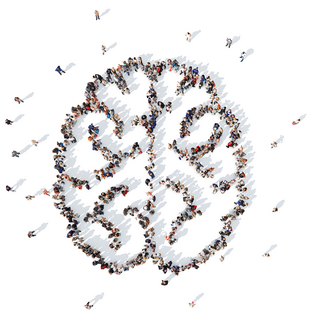Behavioral Science
MIT Sloan research finds social intelligence key indicator of group intelligence
By
CAMBRIDGE, Mass., December 16, 2014—While businesses need to measure their productivity and efficiency, it’s becoming increasingly important for them also to think about their collective intelligence. However, most research has focused on the intelligence of individuals rather than groups. In a recent study by MIT Sloan Prof. Thomas Malone and colleagues from MIT, Carnegie Mellon, and Union College, the researchers found that the social perceptiveness—or social intelligence—of group members is a significant predictor of group intelligence, both for face-to-face groups and online groups.
The study was published today by PLOS ONE. The first author of the study was MIT postdoctoral researcher David Engel, and the other authors included Carnegie Mellon Prof. Anita Woolley, MIT researcher Lisa Jing, and Union College Prof. Christopher Chabris.
“Interpersonal skills have always been important in working successfully in groups within organizations, but these findings indicate they will continue to be important—perhaps even more important—in the electronically connected future,” says Malone, who is the director of the MIT Center for Collective Intelligence and was the senior author of the study.
The new research builds upon a prior study about collective intelligence by Malone and several of the same colleagues. In that earlier study, they found collective intelligence was only moderately correlated to the individual intelligence of group members. Instead, there were three other factors that predicted collective intelligence.
The first was the average social perceptiveness of group members. This was measured by a test called “Reading the mind in the eyes” in which participants looked at pictures of other people’s faces and tried to guess their emotions. When people in a group were good at reading faces, the group on average was more collectively intelligent.
The second factor was the degree to which people participated equally in a group conversation. When one or two people dominated, the group on average was less intelligent than when participation was more evenly spread throughout the group.
The third factor was the percentage of women in the group. Having more women in a group was correlated with a more intelligent group. “This was mostly explained statistically by the social perceptiveness factor, as it was known before that women on average score higher on this measure of social perceptiveness than men,” says Malone. “So one interpretation is that a smart group requires more people with a high level of social intelligence, and it may not matter whether they are men or women.”
In the current work, Malone and his colleagues extended that prior study to online groups. They used a similar measure of collective intelligence, but with both face-to-face and online groups. In the online groups, the participants could only communicate through text chat. They couldn’t see or talk to each other.
“The surprising finding in our new work was that the average social perceptiveness of group members was equally predictive of collective intelligence in both face-to-face and online groups,” says Malone. “So having people in groups with a high level of social intelligence is just as helpful whether the group meets in person or electronically.” He notes that this result is surprising as the study measured people’s ability to read emotions in the eyes, yet the online groups weren’t able to see each other’s faces.
“The test must be tapping into a much broader set of skills than originally thought. It seems to tap into the ability to have accurate theories about what is going on in other people’s minds. People who are good at reading emotion in the eyes also seem to be good at reading emotion in texts and imagining what is going on in others’ minds even though they only see typing.”
Malone notes that the recent study also replicated the findings of the earlier study in terms of the other two factors: gender and equality of group discussions.
“Based on our findings, interpersonal skills are even more important than I used to think,” he adds.
For more information on Prof. Malone, please visit:
http://mitsloan.mit.edu/faculty/detail.php?in_spseqno=41335
To read the full paper, Reading the Mind in the Eyes or Reading between the Lines? Theory of Mind Predicts Collective Intelligence Equally Well Online and Face-To-Face, please visit:
http://www.plosone.org/article/info%3Adoi%2F10.1371%2Fjournal.pone.0115212


